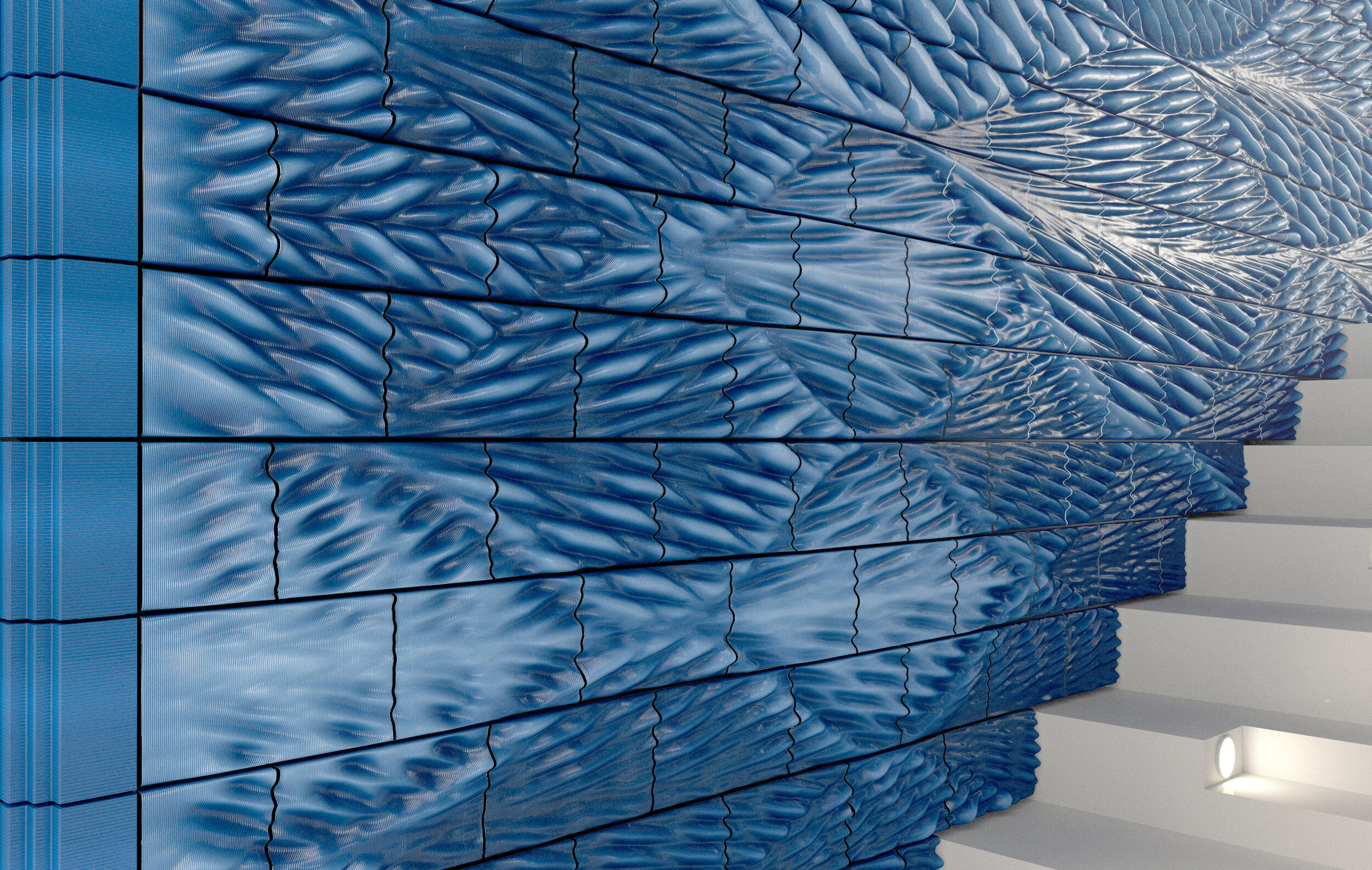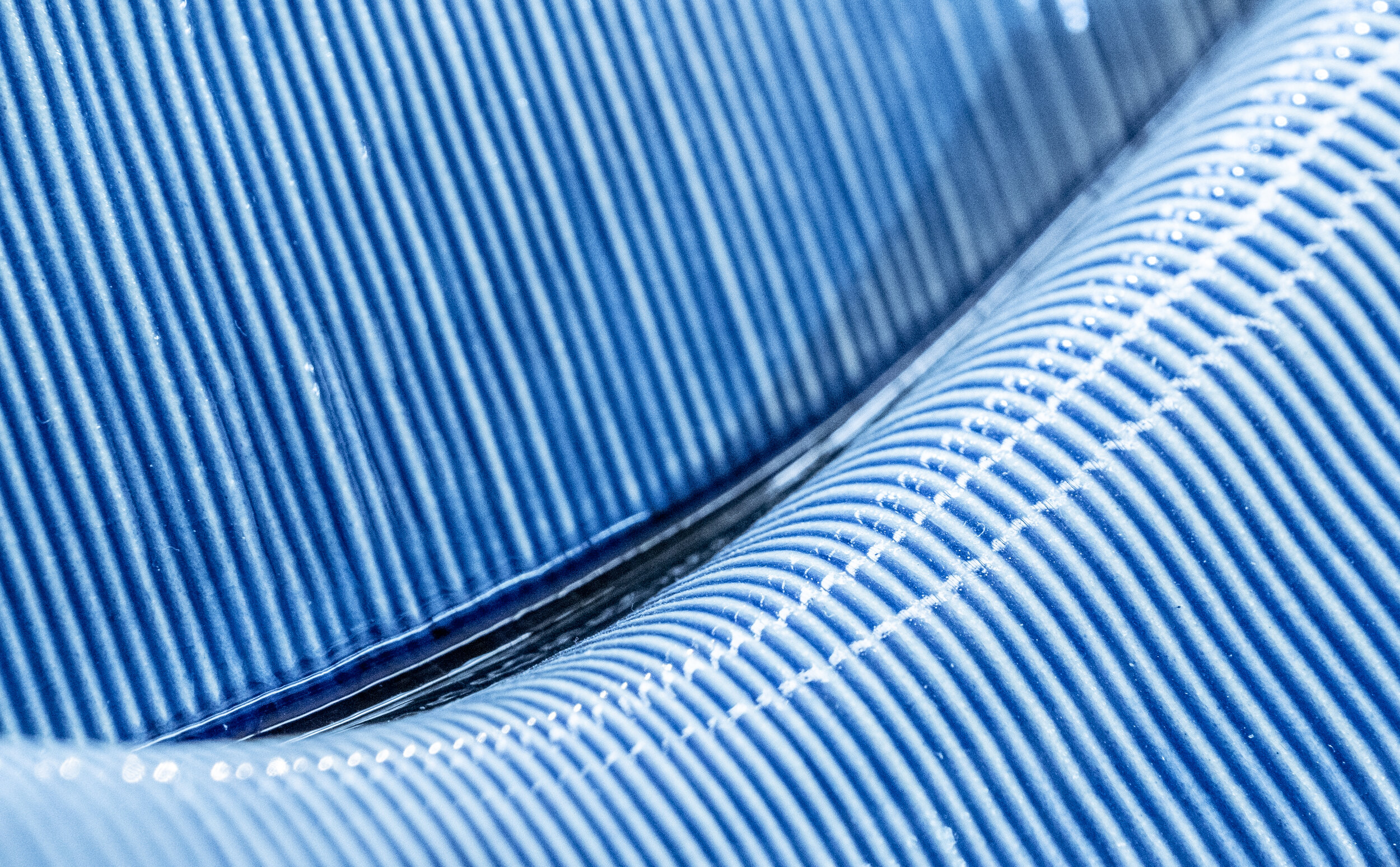
New Delft Blue
Combining ceramic heritage and 3D printing innovation.
Summary
Client: BPD Ontwikkeling
Year: 2019-
Status: ongoing
Location: Delft, Netherlands
Partners: Vera Yanovshtchinsky architecten, Koninklijke Tichelaar Makkum, IRS Robotics, KUKA Robotics
New Delft Blue is a pioneering project in the historic Dutch city of Delft that reinterprets the world-famous decorative qualities and design vocabulary of Delft Blue porcelain.
By fusing 3D clay printing, computational design and artisanal glazing, the architectural potential of ceramics and ornament the 21st century is revealed.
Delft Blue Heritage
The lush communal courtyard of the PoortMeesters building block, which is part of the large scale redevelopment Nieuw Delft, is framed by two large entry gates. These refer to Delft as a medieval trading city with its many city gates and provide passers-by with a glimpse of the idyllic life going on inside.
The New Delft Blue gates take their inspiration from traditional Delft Blue porcelain plates. The design vocabulary of these plates has changed radically over the centuries from copying Chinese and Japanese Oriental designs to making contemporary Dutch designs.
The differentiation between a decorative, abstracted frame and picturesque scene, however, has been a recurring division. This division is the starting point for the New Delft Blue design where the scene is the ever-changing existing courtyard life and the gates exist as three-dimensional frames that focus the view.
Indicating a threshold
The large gates, measuring four meters wide, eight meters high and 12 meters deep, cover a large public staircase that indicate the communal character of the courtyard. The overall design of the ceramic cladding balances the two functions of the gates: to indicate a clear separation between public and communal while at the same time guiding ones attention to the courtyard.
The deep blue colour reflects the connection to Delft Blue porcelain and the surrounding canals and contrast the earth-toned masonry covering the building to indicate a threshold. The ornamental pattern mitigates between the straight sections of the staircase and the mainly horizontal logic of the gate and guides viewers' eyes towards the scene at its center.
3D Ceramic Printing
The tiles will be 3D printed, which allows for the creation of approximately four thousand contemporary, rich and unique ceramic tiles that together make up the two gates. Using an algorithmic approach to 3D pattern design certain manufacturing constraints (maximum overhang, width, height and depth, shrinkage constraints and internal support structure) are taken into account when generating the geometry of the tiles. Because the tiles are 3D printed, applying variation in their shape is rather cheap.
By applying a runny glaze on white-burning clay portions of the tile that are convex (hills) will remain white as the blue glaze pools in the concave (valley) areas of the tile. This poetic method of 'painting with shape' allows for smooth transitions between hues of blue and white that are impossible to produce otherwise.
Opportunities.
The potential for 3D printed ceramics goes far beyond the applications within Delft. Ceramic is a high-quality cladding material that offers low maintenance and high durability in even the most corrosive environments i.e. desert and sea locations.
If you’d like to experiment with 3D clay printing, feel free to get in touch.
This project was realized at Studio RAP, which I founded and ran from 2014-2020.
All images are copyright © of Studio RAP.














